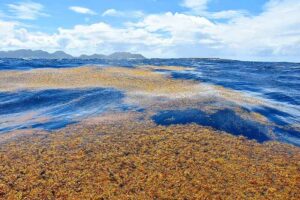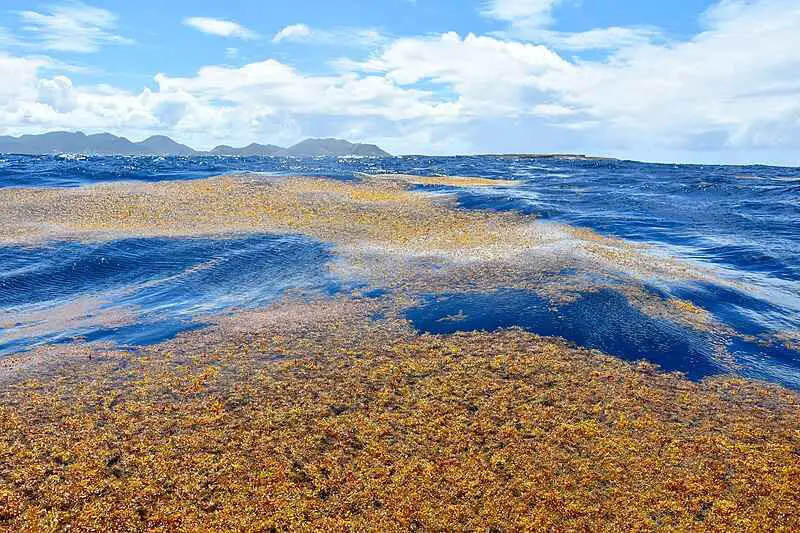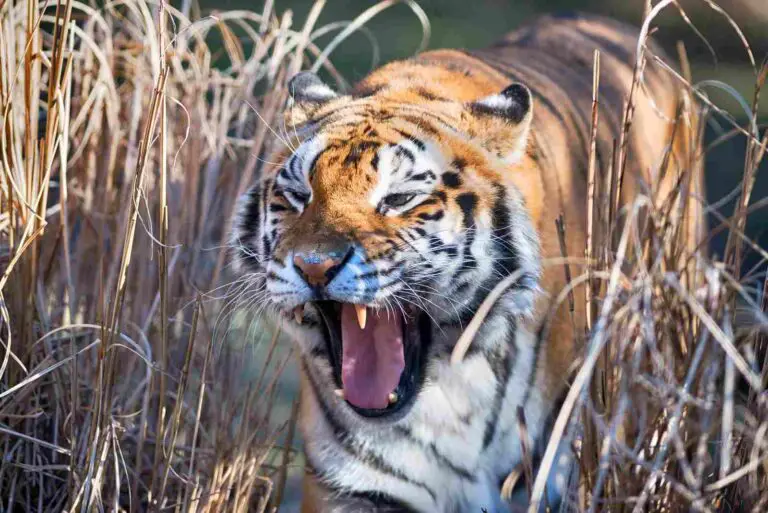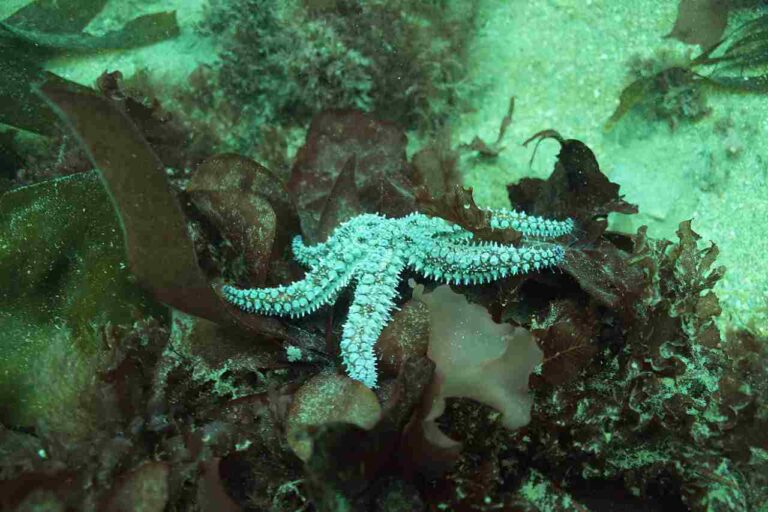3 Types of Marine Ecosystems and their Characteristics Explained
Types of marine ecosystems are; marine coastal, marine surface, and saltwater wetland ecosystems, respectively.
This article discusses the types of marine ecosystems and their characteristics, as follows;
1). Marine Coastal Ecosystem (as one of the Types of Marine Ecosystems)
A marine coastal ecosystem is a type of marine ecosystem that is transitional, and links the ocean to other ecosystems like freshwater bodies, and terrestrial biomes like forests.
Marine coastal ecosystems comprise of marine and non-marine features, with specific details depending on the types of ecosystems involved. In a coastal ecosystem, it is typical to find saltwater, shore sediments, marine vegetation, gases like oxygen and carbon dioxide, as well as marine animals like crustaceans and algae.
The origin of marine coastal ecosystems can be traced to hydrodynamic processes like flooding of sections of the shore by tidal currents [6]. Such processes establish saline conditions on the coast, either by saturating sediments, or by mixing with water from non-saline aquatic ecosystems like rivers and streams.
Because of their terrestrial attributes, there are several opinions regarding the status of coastal ecosystems as aquatic or terrestrial zones.
In some cases, marine coastal ecosystems are described as areas of the shore that have been significantly affected by marine elements and conditions.
Other schools of thought may seek to distinguish and isolate the coast as a separate ecosystem, from the marine terrain.
Coastal ecosystem can be said to differ from marine ecosystem by having shallow saltwater depth [1], as well as based on differences in biodiversity.
A significantly-broad range of biodiversity occurs in marine coastal ecosystems. This comprises of vascular plants, animals and microorganisms that are capable of surviving under conditions that share marine and freshwater or terrestrial attributes.
Based on variations in biodiversity and abiotic conditions, marine coastal ecosystems can be distinguished into various sub-categories, or examples.
Examples of marine coastal ecosystems are; mangrove forests, coral reefs, sandy beaches, estuaries, pelagic sargassum masses, backwaters and lagoons.

2). Marine Surface Ecosystem
A marine surface ecosystem or sea surface is a type of marine ecosystem that defines the contact between saltwater bodies and the atmosphere.
The surface of ocean water is the most common example of marine surface ecosystems, as well as the most important due to its areal coverage and role in Earth's geochemical processes.
However, marine surface ecosystems are not restricted to the ocean, but include the surfaces of saltwater lakes, salt marshes, estuaries and mangroves.
The marine surface is ecologically relevant as an interface between two main segments of the environment, namely the hydrosphere and atmosphere [5].
Because it is restricted to the surficial contact of atmosphere and saltwater, the marine surface ecosystem does not boast of significant biological activity. It is sometimes referred to as the Sea Surface Microlayer (SML) due to its narrow vertical-range. On the other hand, the horizontal range or areal span of the marine surface is enormous.
The surface area of the sea is about 361 million km2, traversing all major continental zones and covering roughly 70 percent of Earth's entire surface [3].
Marine surface ecosystems are important as the interface from which all external inputs of energy and matter (inorganic or biomass) may be introduced into oceans.
Solar energy in both light and thermal forms, must pass through the marine-surface ecosystem, in order to be accessed by marine plants and animals. This implies that the marine food chain depends on the surface of the ocean as an entry point for energy.
Marine surface ecosystems also play a role in the environmental impacts of unsustainable human activities on saltwater bodies. Cases like ocean pollution only occur when pollutants have access to the surface of marine ecosystems.
Compared to other types of marine ecosystems, the surface has received minimal attention in terms of research and discovery [4].
As a result, relatively little is known about the physicochemical conditions specific to the surface, although a recent rise in interest has revealed that the ocean surface is affected by environmental changes accompanying global warming, which have led to an increase in the average temperature of this ecosystem [8].
In spite of its relative biological-inactivity, the marine surface ecosystem is home to phytoplankton, and drifting marine plants.

3). Saltwater Wetland Ecosystem (as one of the Types of Marine Ecosystems)
Wetland ecosystems generally refer to biologically-active regions where the soil is flooded and saturated with freshwater or saltwater.
Characteristics of a wetland ecosystem include inundated soil, seasonal water-level changes, and dominance of hydrophylic plants (or hyrophytes).
By serving as habitats for marine organisms, and locations for the formation of natural energy resources like coal [7], wetland ecosystems can be seen as ecologically diverse and economically-relevant [2].
Saltwater wetlands are simply wetland areas where soil is saturated by saline water. The key difference between saltwater and freshwater wetlands is salinity; where saltwater wetlands have higher levels of dissolved salt than freshwater wetlands, which have no significant salt levels.
An important characteristic for plants found in saltwater wetlands is saline water-tolerance, and possession of roots for anchorage. These plants are often submerged entirely in water, and must therefore have all basic aquatic adaptations.
Salt marshes are an example of saltwater wetlands, and comprise of saturated mud soils, peat, and brackish-marine organisms.
Because they often occur on the coast, saltwater wetlands are often categorized under marine coastal ecosystems. However, the two can be distinguished as entirely-separate ecosystems by the fact that coastal marine zones do not always contain saline water, while wetlands do.
Conclusion
Types of marine ecosystems are;
1. Marine Coastal Ecosystem
2. Marine Surface Ecosystem
3. Saltwater Wetland Ecosystem
References
1). Carrasco De La Cruz PM (2021). "The Knowledge Status of Coastal and Marine Ecosystem Services - Challenges, Limitations and Lessons Learned From the Application of the Ecosystem Services Approach in Management." Front. Mar. Sci. 8:684770. Available at: https://doi.org/10.3389/fmars.2021.684770. (Accessed 17 April 2023).
2). Cherry, J. A. (2011). "Ecology of Wetland Ecosystems: Water, Substrate, and Life." Nature Education Knowledge 3(10):16. Available at: https://www.nature.com/scitable/knowledge/library/ecology-of-wetland-ecosystems-water-substrate-and-17059765/. (Accessed 17 April 2023).
3). Costello, J. M.; Cheung, A., De Hauwere, H. (2010). "Surface Area and the Seabed Area, Volume, Depth, Slope, and Topographic Variation for the World's Seas, Oceans, and Countries." Environmental Science and Technology 44(23):8821-8. Available at: https://doi.org/10.1021/es1012752. (Accessed 17 April 2023).
4). Engel, A.; Bange, H. W.; Cunliffe, M.; Burrows, S. M.; Friedrichs, G.; Galgani, L.; Herrmann, H.; Hertkorn, N.; Johnson, M.; Liss, P. S.; Quinn, P. K.; Schartau, M.; Soloviev, A.; Stolle, C.; Upstill-Goddard, R. C.; van Pinxteren, M.; Zäncker, B. (2017). "The Ocean's Vital Skin: Toward an Integrated Understanding of the Sea Surface Microlayer." Front. Mar. Sci. 4:165. Available at: https://doi.org/10.3389/fmars.2017.00165. (Accessed 17 April 2023).
5). Hardy, J. T. (1982). "The sea surface microlayer: Biology, chemistry and anthropogenic enrichment." Progress in Oceanography, Volume 11, Issue 4, 1982, Pages 307-328. Available at: https://doi.org/10.1016/0079-6611(82)90001-5. (Accessed 17 April 2023).
6). Lycourghiotis, S. A.; Stiros, S. C. (2013). "Coastal Flooding Hazard in Low-Tide and High-Tide Coasts: Evidence from the North Aegean Coast." In: Finkl, C. (eds) Coastal Hazards. Coastal Research Library, vol 1000. Springer, Dordrecht. Available at: https://doi.org/10.1007/978-94-007-5234-4_9. (Accessed 17 April 2023).
7). Orem, W. H.; Finkelman, R. B. (2003). "Coal Formation and Geochemistry." Available at: https://doi.org/10.1016/B0-08-043751-6/07097-3. (Accessed 17 April 2023).
8). Readfearn, G. (2023). "‘Headed off the charts’: world’s ocean surface temperature hits record high." Available at: https://www.theguardian.com/environment/2023/apr/08/headed-off-the-charts-worlds-ocean-surface-temperature-hits-record-high. (Accessed 17 April 2023).



